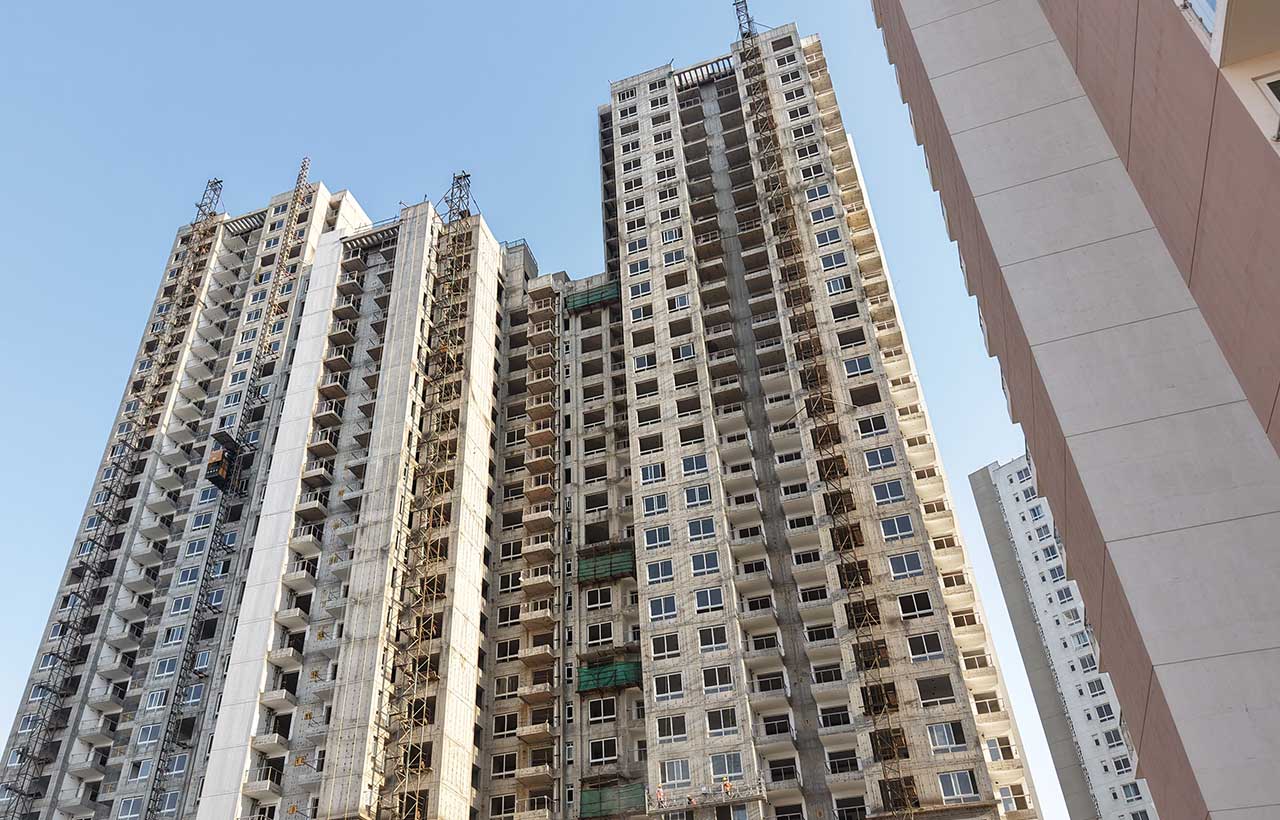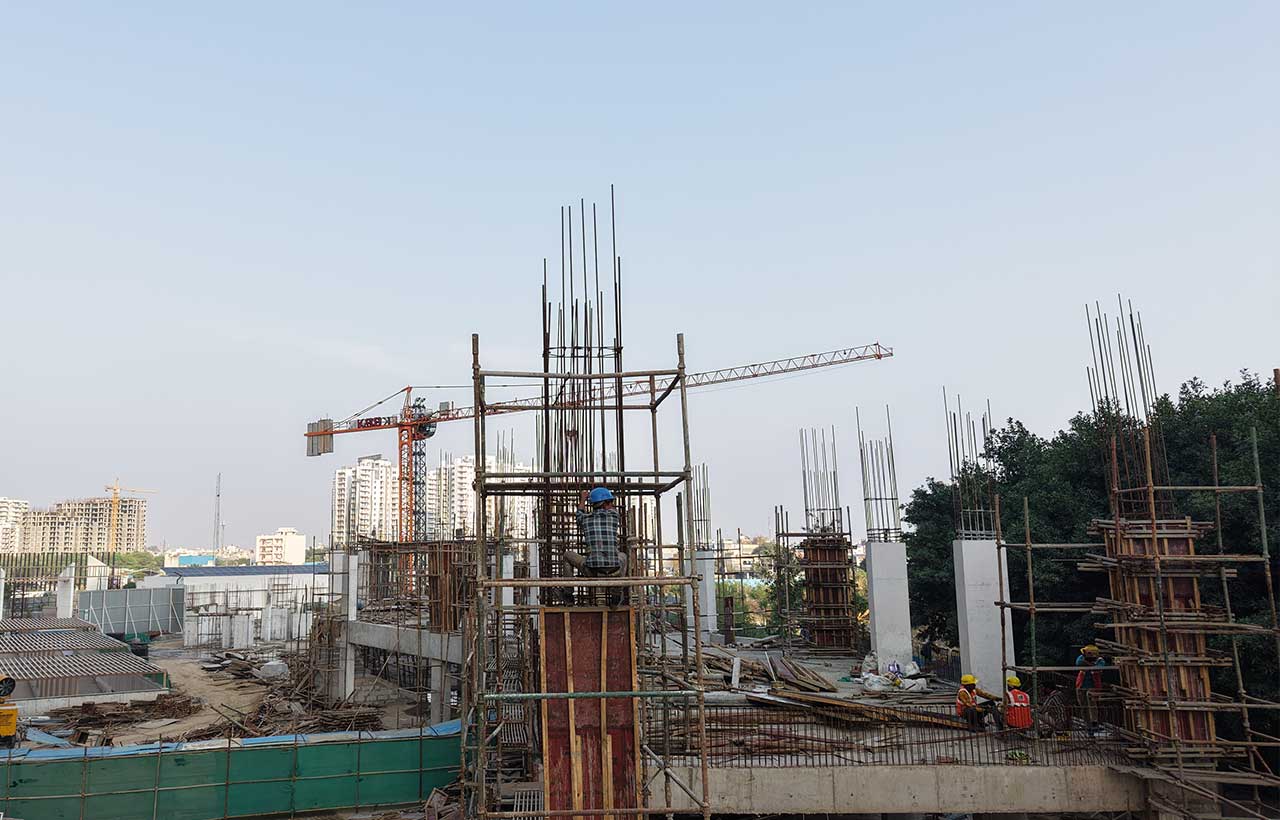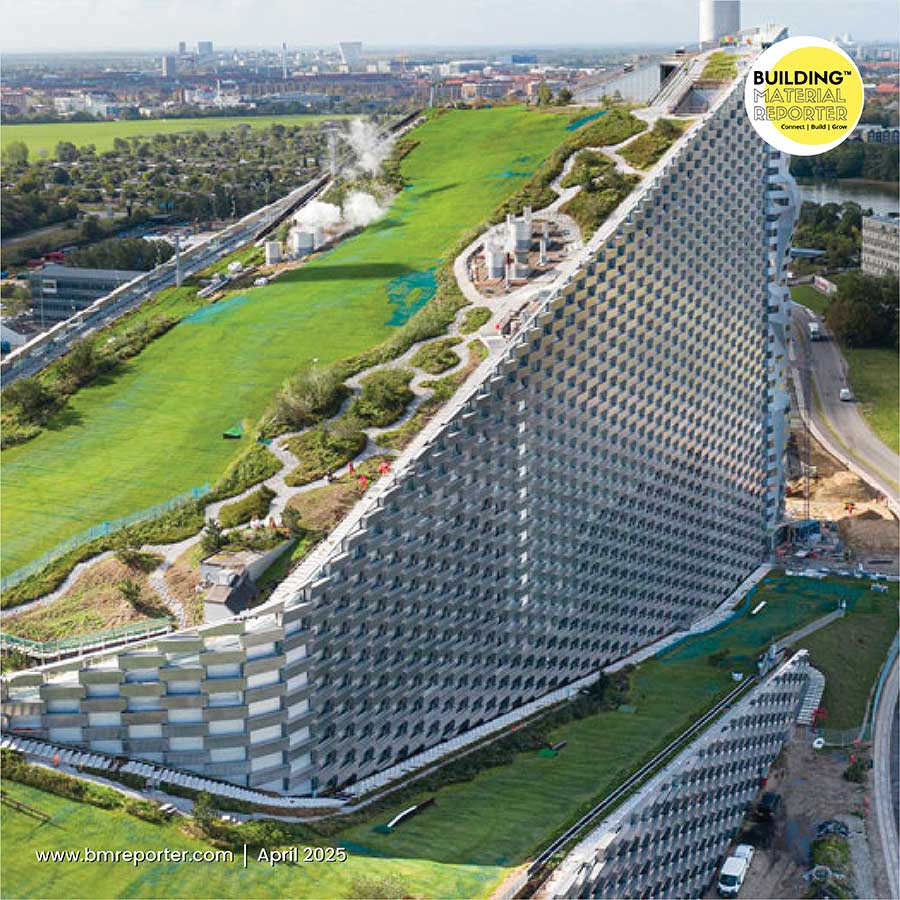How the Construction Sector Can Transition to a Circular Economy
- April 4, 2025
- By: Priyanshi Shah
- INFLUENCERS
 Rahul Bahl, Managing Director, Krishna Buildestates Pvt. Ltd., shares his expert views on how the construction sector impacts the environment and strategies to foster a circular economy. The construction industry accounts for 40% of global carbon emissions and generates over a third of the world’s waste. The industry has long followed a linear model of extract, use, and dispose. However, growing material costs, shrinking landfill site area, and stricter waste disposal regulations are making this approach unsustainable.
Rahul Bahl, Managing Director, Krishna Buildestates Pvt. Ltd., shares his expert views on how the construction sector impacts the environment and strategies to foster a circular economy. The construction industry accounts for 40% of global carbon emissions and generates over a third of the world’s waste. The industry has long followed a linear model of extract, use, and dispose. However, growing material costs, shrinking landfill site area, and stricter waste disposal regulations are making this approach unsustainable.
Rethinking Materials and Resource Use: We know that concrete, steel, and aluminium are key materials for building construction. The problem is that they are energy-intensive to produce. Research and development to reduce this energy consumption is ongoing, but in the medium term, a shift to a circular economy means reducing reliance on virgin materials and instead recovering them from demolition sites for use in new projects.
This practice is known as ‘urban mining’, which is basically the recovery of building materials from old buildings. The practical way is to use alternatives in place of intensive building materials, such as crushed concrete in place of aggregates or refurbished steel or aluminium from old structures. Using sustainable materials or industrial by-products like fly ash or ground granulated blast-furnace slag (GGBS) helps to reduce cement emissions by up to 40 percent.
There is still a green premium associated with their implementation. Industry-wide adoption is possible with the help of a robust public-private framework that takes a carrot and sticks approach, i.e. giving incentives such as tax breaks and gap funding for projects which implement these and setting standards for the use of recycled materials in public and private projects. Strict enforcement and market economics will do the rest.
Designing for Longevity and Reuse: The future reuse of materials is not really the prime consideration for building design, if it is even a consideration at all. To avoid the massive waste that is a result of demolition, modular construction and adaptable design can play a major role. A transition to a circular economy will require a multi-pronged approach with sustainable material sourcing, building design and waste management being the key prongs of any such approach. The goal is to keep resources (especially materials) in use for as long as possible.
Taking a ‘Design-for-disassembly’ approach, as it's called, ensures that materials, fixtures and structural elements are recovered rather than discarded. A basic measure for taking this approach is avoiding adhesives and welded joints wherever possible and sticking to bolted and interlocking joints instead.
 KBE’s Circular Economy Initiatives: KBE has been applying circular construction principles to reduce waste and optimise resource use in its projects using a case-by-case approach. At Smartworld 1DXP and Hero Homes (Mohali and Gurgaon), construction debris was used on-site to fill sunken areas, reducing the need for its disposal. Reinforced steel scrap was recovered and repurposed as precast covers. Crushed concrete and brick waste were used in new construction or supplied for road infrastructure.
KBE’s Circular Economy Initiatives: KBE has been applying circular construction principles to reduce waste and optimise resource use in its projects using a case-by-case approach. At Smartworld 1DXP and Hero Homes (Mohali and Gurgaon), construction debris was used on-site to fill sunken areas, reducing the need for its disposal. Reinforced steel scrap was recovered and repurposed as precast covers. Crushed concrete and brick waste were used in new construction or supplied for road infrastructure.
KBE has also introduced aluminium shuttering systems, replacing single-use wooden formwork to extend material use across multiple projects. Collaborations with recycling facilities ensured construction waste was processed into insulation, bricks, and other materials. These initiatives could save up to Rs. 1 crore per large-scale project in landfill costs and Rs. 2 crore in virgin material savings through steel and concrete reuse. The sale of repurposed materials further adds economic value.
Scaling Circular Construction in India: While some companies are adopting circular economy practices, industry-wide adoption, as mentioned above, requires a robust public-private partnership centered around a thought-out framework. Green financing, tax benefits for recycled materials, and stricter waste management rules could drive faster adoption. Stakeholders following the clear building regulations, and financial incentives can make circular construction feasible at scale. Stronger enforcement of existing regulations, such as the Construction and Demolition Waste Management Rules (2016), is a good starting point.
 A Necessary Shift: Circular construction is not just about sustainability but resource efficiency, cost reduction, and long-term viability. It is crucial age and time to rethink our resources and how they impact the environment. KBE’s approach demonstrates that reducing waste and reusing materials is both possible and economically beneficial. As regulations tighten and material costs rise, companies that adopt circular construction will be better positioned for the future.
A Necessary Shift: Circular construction is not just about sustainability but resource efficiency, cost reduction, and long-term viability. It is crucial age and time to rethink our resources and how they impact the environment. KBE’s approach demonstrates that reducing waste and reusing materials is both possible and economically beneficial. As regulations tighten and material costs rise, companies that adopt circular construction will be better positioned for the future.
Stay Connected with Building Material Reporter: At Building Material Reporter, we are committed to bringing you the latest and most impactful updates from the world of construction and design. Stay tuned for more insights and ideas on cutting-edge construction technology, green buildings, home decor, interior design, innovative materials, new projects, and architectural advancements. Your go-to source for inspiration and knowledge in the industry—because we believe in serving the best.

Frequently Asked Questions (FAQs)
What is a circular economy in the construction sector?
In the construction sector, the solution to environmental or building structures problems is the circular economy. It helps to reduce raw materials in construction, and through changes in design, the existing materials can be reused or recycled.
Why is transitioning to a circular economy important for the construction industry?
Transiting to the circular economy is important as it addresses construction waste, resource consumption while promoting sustainability and the conscious use of building materials.
What are the key principles of circular construction?
The closed-loop system is most commonly used as it is built on the principle of reuse, recycling and repurposing.
How can construction companies implement circular practices?
Focusing on design strategies, selecting eco-friendly materials, recycling and reusing existing structure, while collaborating with industry experts and fostering alliances through design.








